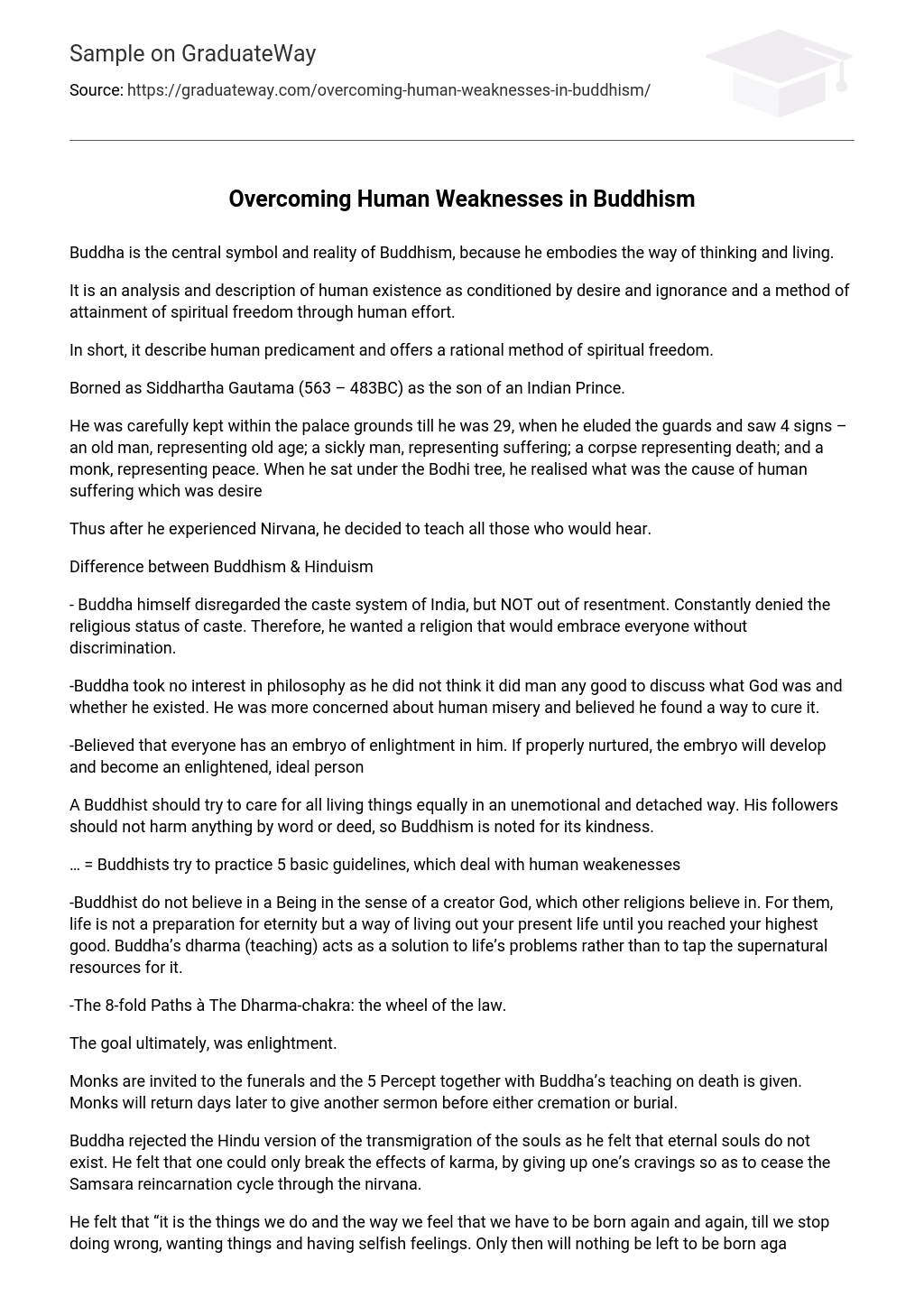Buddha is the central symbol and reality of Buddhism, because he embodies the way of thinking and living.
It is an analysis and description of human existence as conditioned by desire and ignorance and a method of attainment of spiritual freedom through human effort.
In short, it describe human predicament and offers a rational method of spiritual freedom.
Borned as Siddhartha Gautama (563 – 483BC) as the son of an Indian Prince.
He was carefully kept within the palace grounds till he was 29, when he eluded the guards and saw 4 signs – an old man, representing old age; a sickly man, representing suffering; a corpse representing death; and a monk, representing peace. When he sat under the Bodhi tree, he realised what was the cause of human suffering which was desire
Thus after he experienced Nirvana, he decided to teach all those who would hear.
Difference between Buddhism & Hinduism
– Buddha himself disregarded the caste system of India, but NOT out of resentment. Constantly denied the religious status of caste. Therefore, he wanted a religion that would embrace everyone without discrimination.
-Buddha took no interest in philosophy as he did not think it did man any good to discuss what God was and whether he existed. He was more concerned about human misery and believed he found a way to cure it.
-Believed that everyone has an embryo of enlightment in him. If properly nurtured, the embryo will develop and become an enlightened, ideal person
A Buddhist should try to care for all living things equally in an unemotional and detached way. His followers should not harm anything by word or deed, so Buddhism is noted for its kindness.
… = Buddhists try to practice 5 basic guidelines, which deal with human weakenesses
-Buddhist do not believe in a Being in the sense of a creator God, which other religions believe in. For them, life is not a preparation for eternity but a way of living out your present life until you reached your highest good. Buddha’s dharma (teaching) acts as a solution to life’s problems rather than to tap the supernatural resources for it.
-The 8-fold Paths à The Dharma-chakra: the wheel of the law.
The goal ultimately, was enlightment.
Monks are invited to the funerals and the 5 Percept together with Buddha’s teaching on death is given. Monks will return days later to give another sermon before either cremation or burial.
Buddha rejected the Hindu version of the transmigration of the souls as he felt that eternal souls do not exist. He felt that one could only break the effects of karma, by giving up one’s cravings so as to cease the Samsara reincarnation cycle through the nirvana.
He felt that “it is the things we do and the way we feel that we have to be born again and again, till we stop doing wrong, wanting things and having selfish feelings. Only then will nothing be left to be born again.”
-Buddha believed that it was man’s desire to live and to have, that bound him to this world.
It is the goal of all Buddhists and it means “to escape from this world and the rebirth into it.”
Enlightment constitute salvation but Nirvana is the ultimate blessedness where salvation leads to.
-It is really hard to pinpoint what Nirvana is as it connotes the indescribable and transcendent realm sought in this pragmatic religion.
-State most desired as the pattern of life has been broken such that it is timeless and changeless.
-Rather, it is the creation of a new and higher state of mind, panna.
-Belif that Buddha was an incarnation of an Eternal Being, who has…





